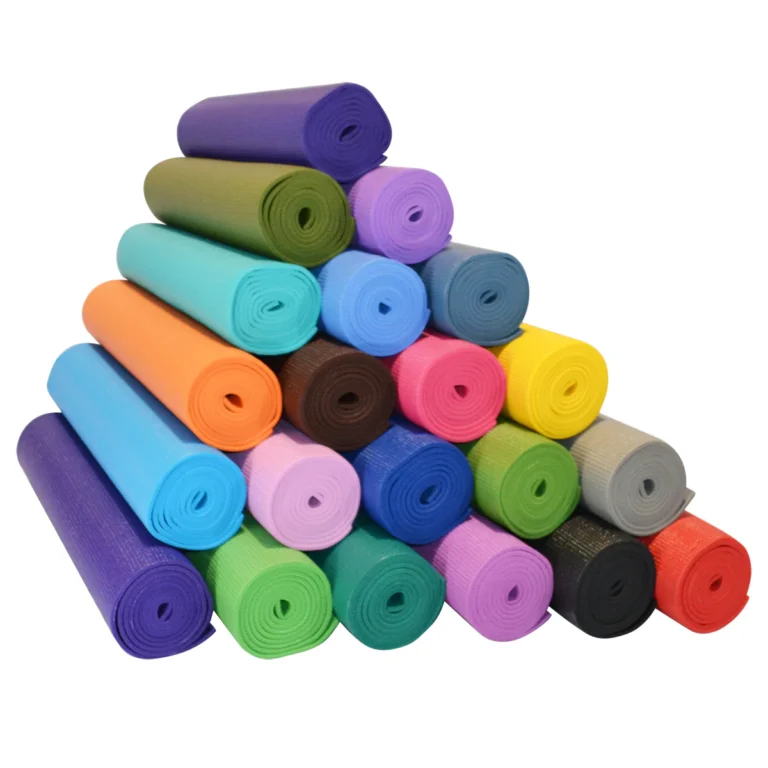
Introduction:
In the search for holistic health and wellness, yoga stands out as a time-honoured discipline with physical, mental, and spiritual components. The yoga mat is fundamental to this ancient discipline, serving as the foundation for one’s practice despite its seeming simplicity. In this in-depth examination, we will discover the importance of the yoga mat in promoting health and wellness, explore the various types of mats designed for beginners and seasoned practitioners, and explain the numerous benefits they provide to persons committed to their yoga path.
Yoga Mats and its Importance:
Yoga mats are a fundamental component of the practice and offer numerous advantages that enhance general health and well-being. They are much more than just an accessory.
1. Consistency and Assistance:
A good yoga mat offers a firm and cushioned surface so that practitioners can confidently and easily execute a variety of yoga poses, or asanas. It provides support for healthy alignment and lessens the strain on joints and muscles by cushioning the body against harsh floors.
2. Safety and Injury Prevention:
Yoga mats offer traction and grip, minimizing the risk of slips and falls during practice, especially in dynamic or challenging sequences. This enhances safety and prevents injuries, allowing practitioners to explore their practice with greater freedom and confidence.
3. Cleanliness & Hygiene:
Yoga mats contribute to the hygienic and tidy conditions of communal practice areas by establishing a partition between the practitioner and the floor. By avoiding direct contact with perspiration, dust, and filth, they reduce the spread of allergies and bacteria.
4. Relaxation and Comfort:
A yoga mat’s cushioned surface improves comfort in sitting and lying poses, which promotes calmness and stress reduction. It establishes a quiet, designated practice area where people can concentrate within and develop mindfulness.
5. The Mind-Body Link:
A strong mind-body connection is fostered by the tactile sensation of the yoga mat against the body, which heightens the practitioner’s awareness of physical sensations. The practice of yoga is enhanced by this increased awareness, which promotes mindfulness and presence in every pose and breath.Yoga Mat Types for Beginners and Fans:
Yoga mats are available in a wide variety of materials, thicknesses, textures, and designs to suit the specific requirements and tastes of practitioners of all skill levels. The following popular varieties of yoga mats are appropriate for both novice and experienced practitioners:
1. PVC (Polyvinyl Chloride) Mats:
PVC mats are affordable, durable, and widely available, making them an accessible option for beginners. They offer excellent grip and cushioning, providing stability during practice. However, some individuals may prefer eco-friendly alternatives due to environmental concerns associated with PVC production and disposal.
2. TPE (Thermoplastic Elastomer) Mats:
TPE mats are made from non-toxic, biodegradable materials, offering an eco-friendly alternative to PVC mats. They provide good traction, cushioning, and durability, making them suitable for both beginners and experienced yogis. TPE mats are lightweight and easy to clean, enhancing convenience for regular practice.
3. Natural Rubber Mats:
Natural rubber mats are crafted from sustainable rubber sources, offering superior grip, cushioning, and durability. They provide excellent traction even in sweaty conditions, making them ideal for dynamic or heated yoga styles. While natural rubber mats tend to be heavier and pricier than other options, their eco-friendly credentials and performance benefits make them a preferred choice for many yogis.
4. Cork Mats:
Cork mats are crafted from natural cork harvested from oak trees, offering unique properties that appeal to environmentally conscious yogis. Cork mats provide antimicrobial protection, superior grip, and excellent traction, even when wet. They are ideal for hot yoga or practitioners seeking a sustainable and eco-friendly option.
5. Travel Mats:
Travel mats are designed for portability and convenience, making them ideal for yogis on the go. These lightweight mats are thinner than standard mats but still offer adequate cushioning and grip for practice. They can be easily rolled up and stowed in a suitcase or backpack, enabling practitioners to maintain their yoga routine wherever they go.
Benefits of Yoga Mats :
The benefits of using a yoga mat extend far beyond the physical realm, encompassing mental, emotional, and spiritual aspects of well-being. Here are some key benefits associated with regular yoga mat practice:
1. Stress Reduction:
Yoga mats provide a dedicated space for mindfulness and stress relief, allowing practitioners to disconnect from the outside world and focus inward. The rhythmic flow of breath and movement on the mat promotes relaxation and calms the mind, reducing stress and anxiety.
2. Improved Flexibility and Strength:
Consistent practice on a yoga mat helps improve flexibility, strength, and mobility, enhancing overall physical fitness. The supportive surface of the mat facilitates safe and effective stretching, enabling practitioners to gradually increase their range of motion and build muscular strength.
3. Enhanced Concentration and Mental Clarity:
Practicing yoga on a mat cultivates mental focus, concentration, and clarity of thought. The meditative aspects of yoga encourage present-moment awareness, sharpening cognitive function and promoting mental agility.
4. Emotional Balance and Well-Being:
Yoga mats serve as sacred spaces for self-expression and emotional release, allowing practitioners to explore and process their thoughts, feelings, and emotions. The therapeutic benefits of yoga help restore emotional balance, promote inner harmony, and foster a sense of well-being.
5. Connection to Self and Others:
Yoga mats serve as symbolic markers of personal commitment and dedication to the practice of yoga. They create a sense of belonging and community among practitioners, fostering connections both within oneself and with others who share a similar journey of self-discovery and growth.
